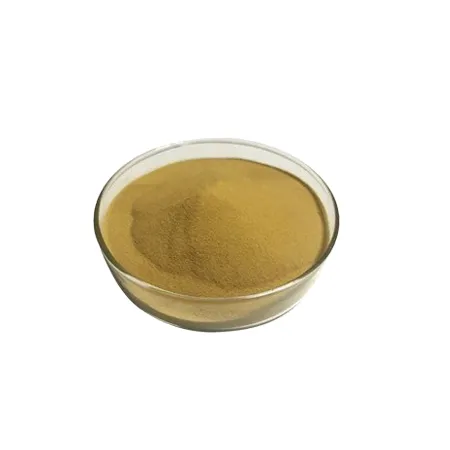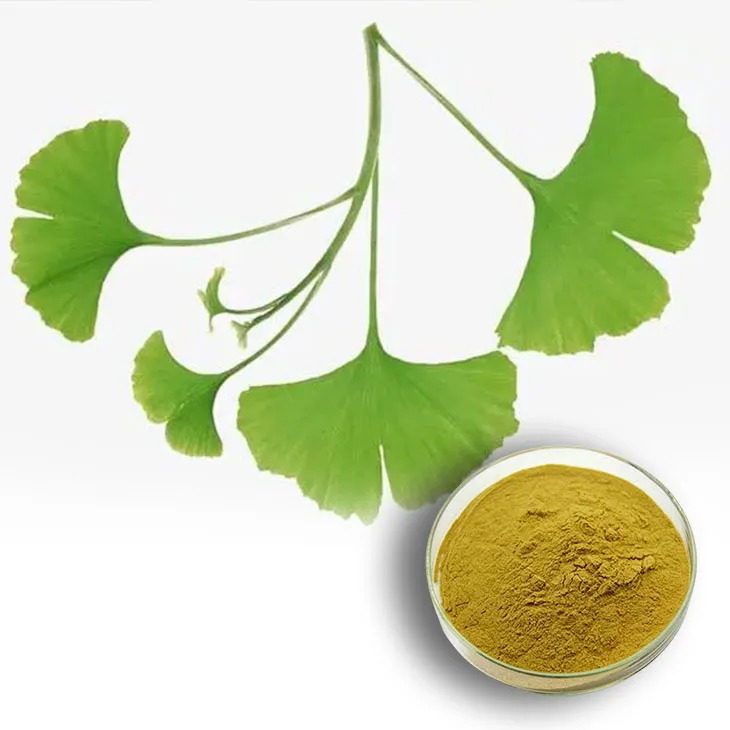- 0086-571-85302990
- sales@greenskybio.com
Ginkgo biloba Extract: Their Production Methods and Reasons for Their Popularity
2024-12-23

1. Introduction
Ginkgo biloba, often referred to as the "living fossil," has a long history of use in traditional medicine. Ginkgo biloba extract has gained significant popularity in recent years, both in traditional medicine systems and in modern - day health - related applications. This article will explore the manufacturing process of ginkgo biloba extract, from the initial harvesting to the final extraction techniques, and will also discuss the reasons behind its widespread appeal.

2. Harvesting of Ginkgo Biloba
2.1. Selecting the Right Time
The harvesting of ginkgo biloba is a crucial first step in the production of its extract. Ginkgo biloba leaves are typically harvested in the fall when the concentration of active compounds is at its peak. This is because during the fall, the tree has completed a significant part of its growth cycle for the year, and the leaves have accumulated a sufficient amount of the desired substances.2.2. Quality Assurance in Harvesting
When harvesting, it is essential to ensure that only healthy leaves are collected. Diseased or damaged leaves may contain lower levels of active ingredients or may introduce contaminants into the extract. Additionally, proper harvesting techniques should be employed to avoid harming the tree itself, as ginkgo biloba trees can be long - lived and valuable sources of future harvests. For example, using sharp tools to cleanly cut the leaves rather than tearing them can help maintain the integrity of the plant and ensure a high - quality harvest.
3. Initial Processing of Harvested Material
3.1. Cleaning
Once the ginkgo biloba leaves are harvested, they need to be thoroughly cleaned. This involves removing any dirt, debris, or other foreign matter that may have adhered to the leaves during harvesting. Cleaning can be done using gentle mechanical methods, such as shaking the leaves in a sieve or using a soft - bristled brush to remove surface contaminants. This step is crucial as any remaining dirt or debris can interfere with the extraction process and potentially contaminate the final extract.3.2. Drying
After cleaning, the leaves are dried. Drying helps to preserve the leaves and reduces the moisture content, which is important for the extraction process. There are different drying methods available, such as air - drying and using specialized drying equipment. Air - drying is a more traditional method, where the leaves are spread out in a well - ventilated area and allowed to dry naturally. However, this method can be time - consuming and may be affected by environmental factors such as humidity. Using drying equipment, on the other hand, can provide more controlled drying conditions, ensuring a more consistent and efficient drying process.
4. Extraction Techniques
4.1. Solvent Extraction
One of the most common extraction techniques for ginkgo biloba extract is solvent extraction. Solvents such as ethanol or acetone are often used. In this process, the dried ginkgo biloba leaves are soaked in the solvent for a period of time. The solvent helps to dissolve the active compounds present in the leaves, such as flavonoids and terpenoids. After soaking, the mixture is filtered to separate the liquid extract (containing the dissolved active compounds) from the solid plant material. The solvent is then evaporated, leaving behind the concentrated ginkgo biloba extract.4.2. Supercritical Fluid Extraction
Supercritical fluid extraction is a more advanced and environmentally friendly extraction method. In this technique, a supercritical fluid, usually carbon dioxide, is used. Supercritical carbon dioxide has properties that are intermediate between a gas and a liquid. It can effectively penetrate the plant material and extract the active compounds. The advantage of this method is that it can operate at relatively low temperatures, which helps to preserve the integrity of the active compounds. Additionally, since carbon dioxide is a gas at normal atmospheric conditions, it can be easily removed from the extract, leaving behind a pure and high - quality ginkgo biloba extract.
5. Quality Control in Ginkgo Biloba Extract Production
5.1. Chemical Analysis
Quality control is of utmost importance in the production of ginkgo biloba extract. Chemical analysis is carried out to determine the concentration of active compounds in the extract. This includes the measurement of flavonoids, terpenoids, and other bioactive substances. High - performance liquid chromatography (HPLC) is often used for this purpose. By accurately determining the chemical composition of the extract, manufacturers can ensure that the product meets the required standards and is consistent in its quality.5.2. Microbiological Testing
Microbiological testing is also essential to ensure the safety of the ginkgo biloba extract. Tests are carried out to detect the presence of harmful microorganisms such as bacteria, fungi, and yeasts. Contamination with these microorganisms can pose a risk to the consumers of the extract. If any microbial contamination is detected, appropriate measures need to be taken to eliminate the contaminants or to discard the affected batch of extract.6. Reasons for the Popularity of Ginkgo Biloba Extract
6.1. Traditional Medicinal Use
Ginkgo biloba has a long - standing history in traditional medicine. In traditional Chinese medicine, for example, it has been used to treat various ailments such as respiratory problems, circulatory disorders, and cognitive impairments. The traditional use of ginkgo biloba has been passed down through generations, and this has contributed to its popularity in modern times. People are often drawn to natural remedies with a long history of use, believing that they may offer safe and effective solutions to their health problems.6.2. Modern - Day Health - Related Applications
In modern - day health - related applications, ginkgo biloba extract has been studied for its potential benefits in several areas.- Cognitive Function: Some studies suggest that ginkgo biloba extract may improve cognitive function, including memory, attention, and concentration. This has led to its use in products aimed at enhancing brain health, such as dietary supplements for the elderly or those with mild cognitive impairment.
- Circulatory Health: Ginkgo biloba extract is believed to have positive effects on the circulatory system. It may help to improve blood flow, reduce blood viscosity, and enhance the function of blood vessels. As a result, it has been used in the prevention and treatment of cardiovascular diseases, such as atherosclerosis and peripheral vascular disease.
- Antioxidant Properties: The flavonoids and terpenoids present in ginkgo biloba extract have antioxidant properties. Antioxidants help to protect the body against oxidative stress, which is associated with various diseases, including cancer, neurodegenerative diseases, and aging. This antioxidant activity has made ginkgo biloba extract a popular ingredient in anti - aging and health - promoting products.
7. Conclusion
The manufacturing of ginkgo biloba extract involves a series of carefully controlled steps, from harvesting to extraction and quality control. The popularity of ginkgo biloba extract can be attributed to its traditional use in medicine and its modern - day applications in promoting health. As research continues to explore the potential benefits of this natural extract, it is likely to remain a popular choice in the fields of traditional and alternative medicine, as well as in the development of health - promoting products.
FAQ:
1. How is ginkgo biloba harvested for extract production?
The ginkgo biloba leaves are typically harvested from mature ginkgo trees. The best time for harvesting is usually in the fall when the active compounds in the leaves are at their peak levels. Workers carefully pick the leaves by hand or use appropriate tools to ensure the quality of the raw material for the extract production.
2. What are the common extraction techniques for ginkgo biloba extract?
One common method is solvent extraction. Organic solvents like ethanol are often used to dissolve the active components from the ginkgo biloba leaves. Another technique is supercritical fluid extraction, which uses supercritical carbon dioxide. This method can be more precise in isolating the desired compounds while being relatively environmentally friendly.
3. What are the traditional medical uses of ginkgo biloba?
In traditional medicine, ginkgo biloba has been used for various purposes. It was often used to improve blood circulation, which was believed to be beneficial for treating ailments related to the heart and blood vessels. It was also used to enhance memory and cognitive function, and in some cases, for treating respiratory problems.
4. How does ginkgo biloba extract contribute to modern - day health?
In modern - day health applications, ginkgo biloba extract is often used as a supplement. It is thought to support brain health, potentially improving memory, concentration, and reducing the risk of age - related cognitive decline. It may also have antioxidant properties, which can help protect cells from damage caused by free radicals. Additionally, it is still considered beneficial for cardiovascular health by promoting healthy blood flow.
5. Are there any side effects associated with ginkgo biloba extract?
Yes, there can be side effects. Some people may experience mild side effects such as headache, dizziness, or gastrointestinal discomfort. In more rare cases, it may cause allergic reactions. Also, ginkgo biloba can interact with certain medications, so it's important to consult a doctor before using it, especially if taking other drugs.
6. How is the quality of ginkgo biloba extract ensured?
The quality of ginkgo biloba extract is ensured through several measures. Firstly, strict control of the raw material source, including proper harvesting and selection of high - quality ginkgo biloba leaves. Secondly, during the extraction process, standardized extraction procedures are followed to ensure consistent levels of active compounds. Thirdly, quality control tests are carried out, such as analyzing the content of key active ingredients and checking for contaminants.
Related literature
- The Chemistry and Biology of Ginkgo biloba"
- "Ginkgo biloba Extract: A Review of Its Medicinal Properties"
- "Manufacturing and Quality Control of Ginkgo biloba Extracts"
- ▶ Hesperidin
- ▶ citrus bioflavonoids
- ▶ plant extract
- ▶ lycopene
- ▶ Diosmin
- ▶ Grape seed extract
- ▶ Sea buckthorn Juice Powder
- ▶ Beetroot powder
- ▶ Hops Extract
- ▶ Artichoke Extract
- ▶ Reishi mushroom extract
- ▶ Astaxanthin
- ▶ Green Tea Extract
- ▶ Curcumin Extract
- ▶ Horse Chestnut Extract
- ▶ Other Problems
- ▶ Boswellia Serrata Extract
- ▶ Resveratrol Extract
- ▶ Marigold Extract
- ▶ Grape Leaf Extract
- ▶ blog3
- ▶ blog4
- ▶ blog5
-
Pure 85% Tomentil Extract.
2024-12-23
-
Beta Carotene
2024-12-23
-
Citrus Aurantium Extract
2024-12-23
-
Mulberry Extract
2024-12-23
-
Peppermint Oil
2024-12-23
-
Curcumin
2024-12-23
-
Boswellia Serrata Extract
2024-12-23
-
Longan Extract
2024-12-23
-
Green Tea Extract
2024-12-23
-
Tamarind extract powder
2024-12-23
-
Natural grape seed extract
2024-12-23





















